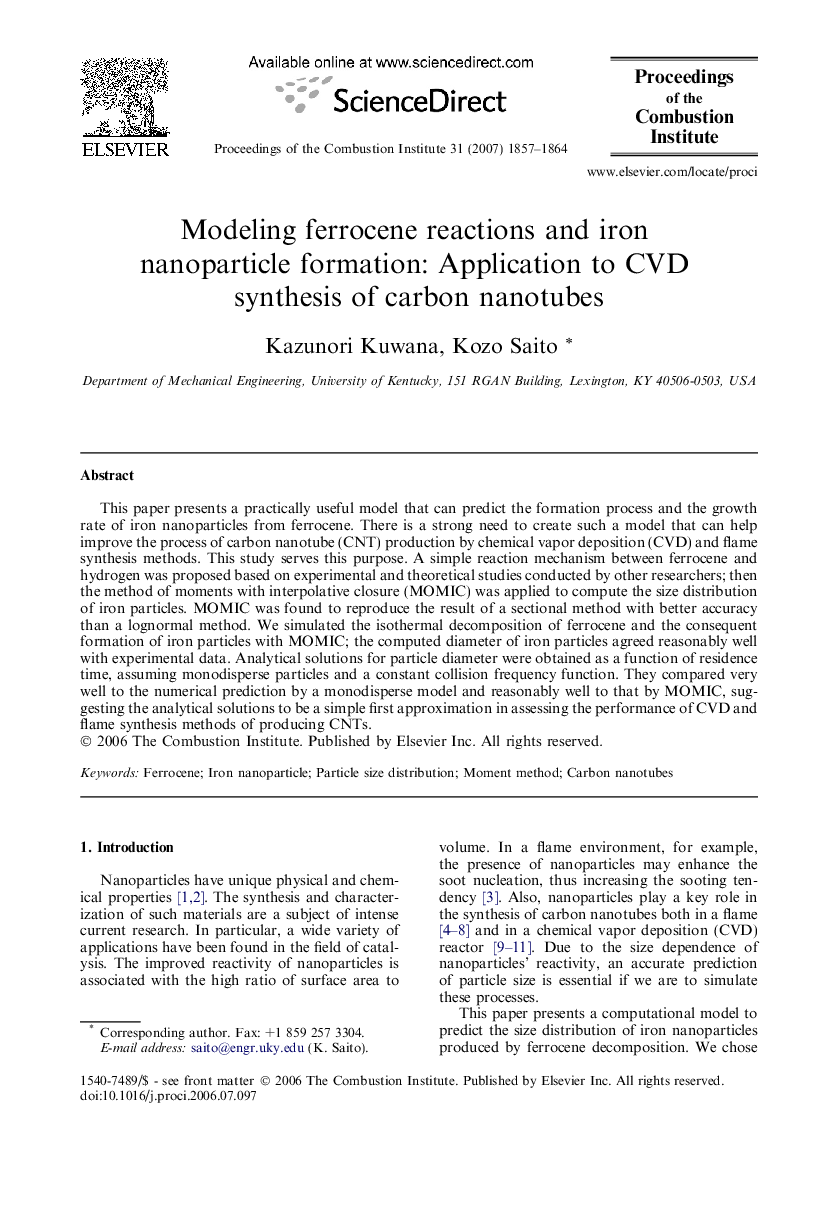| Article ID | Journal | Published Year | Pages | File Type |
|---|---|---|---|---|
| 241227 | Proceedings of the Combustion Institute | 2007 | 8 Pages |
This paper presents a practically useful model that can predict the formation process and the growth rate of iron nanoparticles from ferrocene. There is a strong need to create such a model that can help improve the process of carbon nanotube (CNT) production by chemical vapor deposition (CVD) and flame synthesis methods. This study serves this purpose. A simple reaction mechanism between ferrocene and hydrogen was proposed based on experimental and theoretical studies conducted by other researchers; then the method of moments with interpolative closure (MOMIC) was applied to compute the size distribution of iron particles. MOMIC was found to reproduce the result of a sectional method with better accuracy than a lognormal method. We simulated the isothermal decomposition of ferrocene and the consequent formation of iron particles with MOMIC; the computed diameter of iron particles agreed reasonably well with experimental data. Analytical solutions for particle diameter were obtained as a function of residence time, assuming monodisperse particles and a constant collision frequency function. They compared very well to the numerical prediction by a monodisperse model and reasonably well to that by MOMIC, suggesting the analytical solutions to be a simple first approximation in assessing the performance of CVD and flame synthesis methods of producing CNTs.
